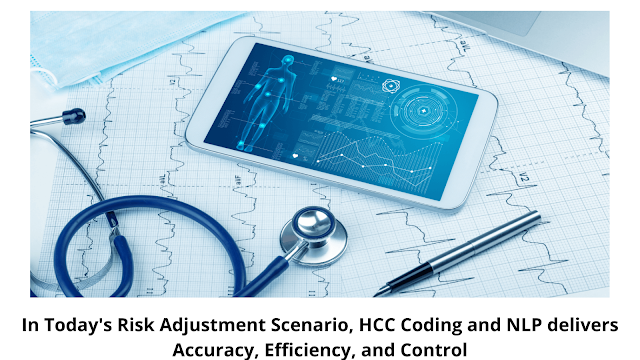In Today's Risk Adjustment Scenario, HCC Coding and NLP delivers Accuracy, Efficiency, and Control
Value-based care has evolved as an alternative to the conventional fee-for-service paradigm, emphasizing quality above quantity. Consequently, high-tech Risk Adjustment Solutions are becoming increasingly popular among health plans for premiums and overall financial performance, prompting them to seek approaches to improve the effectiveness and ROI of their risk adjustment plans.
Value-based care (also
known as Accountable Care and Population Health Management) has gained
popularity, owing to the fact that the value-based compensation model
incentivizes clinicians to deliver the finest treatment at the lowest possible
cost. As the term implies, the patients are getting more value for the money.
Risk Adjustment
Solutions employ Hierarchical Condition Category (HCC
Coding) and Natural Language Processing (NLP) to formulate a
complete Risk Adjustment action plan that engages both clinicians and patients
in a diverse range of value-based insurance coverage initiatives, such as ACOs,
Direct Contracting (CMS), Comprehensive Primary Care Plus (CPC+), and many
others.
The Use of HCC Coding
Induces a Reimbursement Transition
HCC Coding is critical to the financial viability of a healthcare
organization. When HCC codes are properly recorded, they generate an accurate
representation of a patient's condition. Furthermore, the application of HCCs
frequently results in appropriately increased remuneration to meet the expenses
of providing care under value-based policies.
By using a patient's
diagnostic coding history, the HCC Coding procedure generates an RAF
score for a patient that indicates his or her health condition. This score is
then multiplied by a base rate under Medicare Advantage to determine the Per
Member Per Month (PMPM) capitated compensation for the near term of coverage.
The fixed cost is estimated when this is averaged throughout an entire
payer-defined demographic.
Enhancing Risk
Adjustment With NLP
Natural language
processing (NLP) can interpret unstructured patient information in
useful medical information to assist healthcare organizations in efficiently
identifying risk, care gaps, and improving both qualities of care and economic
performance. Without a question, NLP-enabled new tech is becoming a valuable
tool for achieving risk-adjustment success.
NLP-aided risk stratification adds significant value since it allows
coders to target on the suitable members first and then navigate their way down
the priority list.
NLP technology evolves
coder efficiency as well as quality. The first pass review is performed by NLP,
which provides coders with a collection of diagnosis codes to evaluate while
decreasing the quantity of data they must first submit.
Through enhanced chase
targeting and automated data extraction, NLP can expedite the data
recovery procedure, eliminating or dramatically reducing chart chase
difficulties and saving both sides time, expense, and irritation.


.png)
Comments
Post a Comment
Please do not enter any spam link in the comment box